RYDL is a rather “classic” file-based set of puzzles composed by COL, who was from the team first solved Tìngäzìk. COL sent this puzzle to us as a response to Tìngäzìk. (Thank you, COL!)
The puzzle is a zip archive containing 6 PNG image files with the first one being an instruction page for the puzzle. The puzzle set consists of 6 main puzzles and a meta puzzle. Puzzles are not related to each other except the metapuzzle depends on the answer to all the others ones. Answers to all 7 puzzles are English words of 6 letters.
In this blog, we’ll talk about how we – Eana, Ben Pig Chu, and an anonymous contributor – solved this puzzle, and some interesting details we learnt from COL after solving it.
Puzzle #1
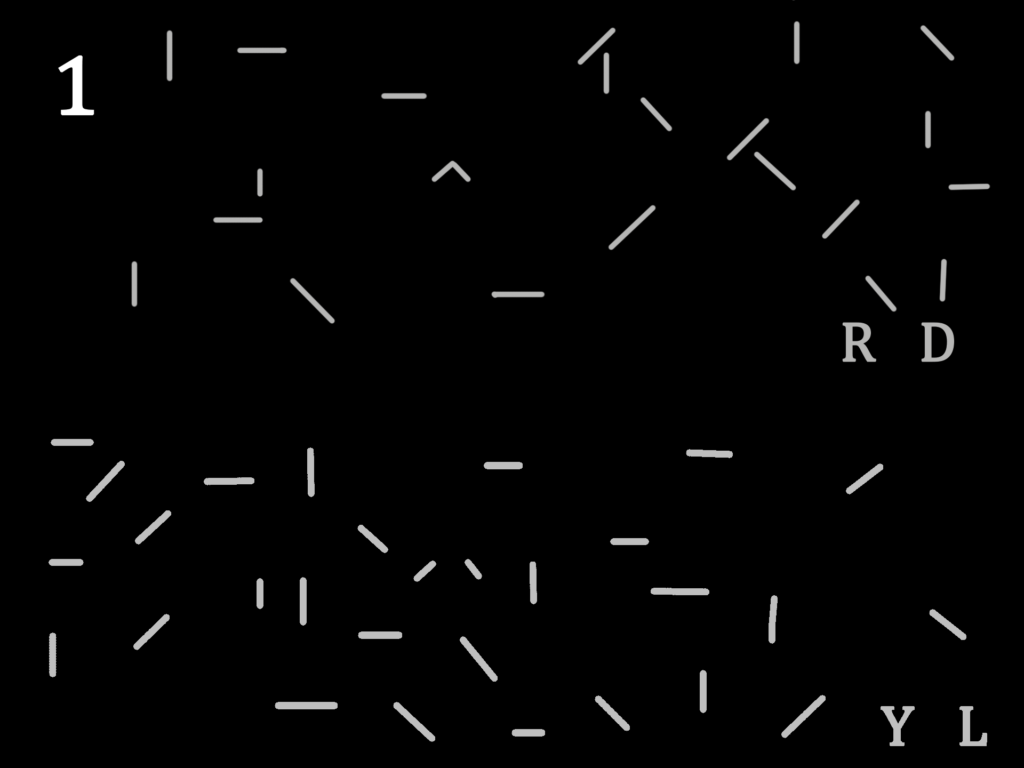
This puzzle comes with 2 halves in slightly different shades of gray. Overlapping the 2 halves gives the following pattern with the complete title RYDL.
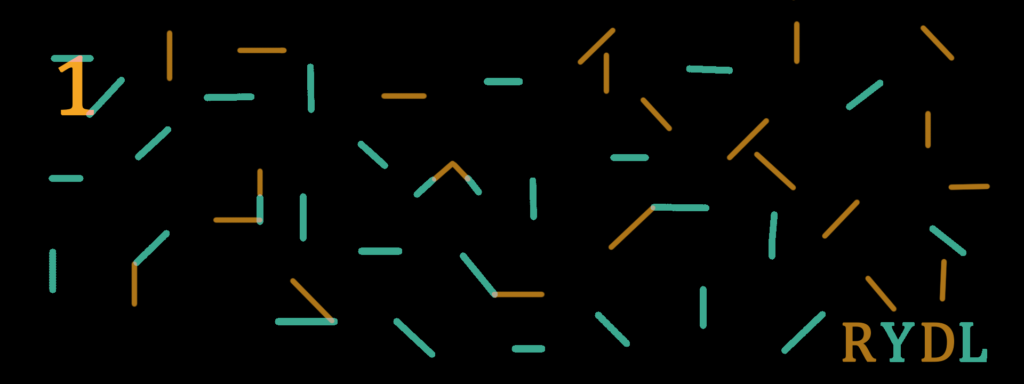
Joining the 2 halves, only 6 parts of those lines are connected together.
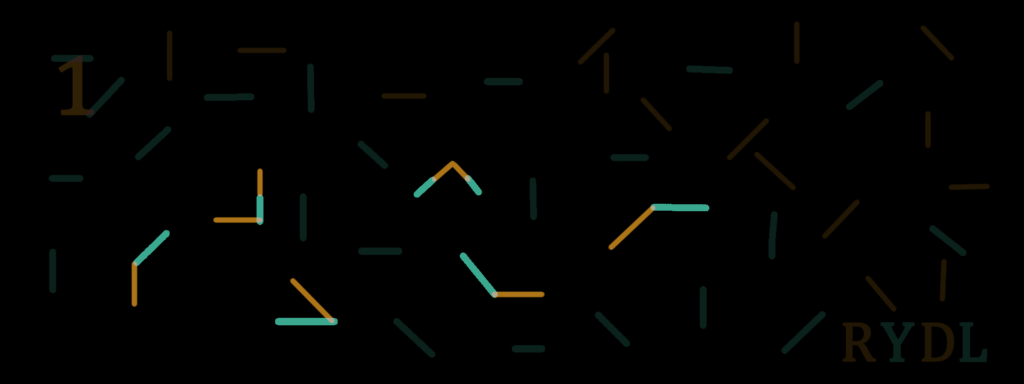
Since the answers are 6 letter words, these 6 folds can be identified as flag semaphores. Therefore, the 6 letters are:
 |  |  |  |  |  |
| E | P | O | N | Y | M |
eponym n. /ˈepəˌnim/
a person after whom a discovery, invention, place, etc., is named or thought to be named.
Puzzle #2
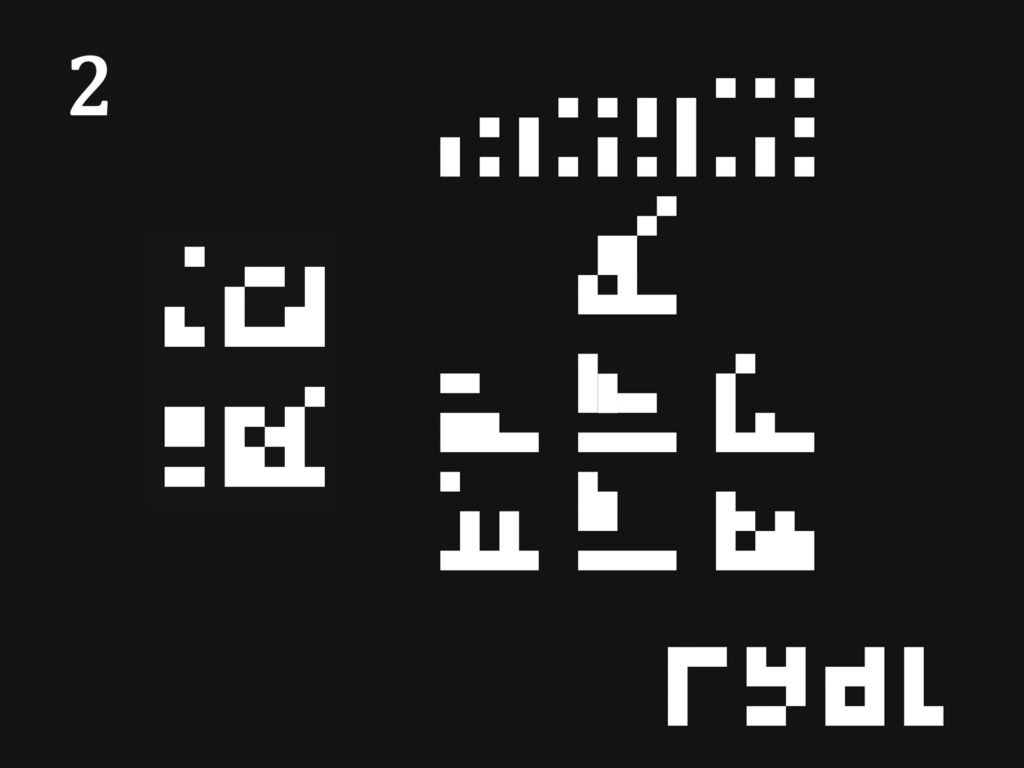
To the top is the famous Arecibo Message representing 1 to 10 in binary. In Arecibo, a first block of five numbers 1, 6, 7, 8, and 15 appear, denoting the atomic numbers of hydrogen (H), carbon (C), nitrogen (N), oxygen (O), and phosphorus (P), the elements from which DNA is composed. However, instead of 15, we have 16 here for sulfur (S).
Similar to Arecibo, 6 chemical compound can be constructed using the 6 groups of 5 numbers below
| H | C | N | O | S | Molecular Formula | Example of chemical compounds |
|---|---|---|---|---|---|---|
| 5 | 5 | 1 | C5H5N | Pyridine, 4-Cyano-1-butyne, etc. | ||
| 14 | 6 | 2 | 2 | C6H14N2O2 | Lysine, etc. | |
| 7 | 8 | 1 | C8H7N | Iodole, Benzyl Cyanide (BnCN), Indolizine, Isoindole, etc. | ||
| 8 | 3 | 3 | C3H8O3 | Glycerol, etc. | ||
| 14 | 6 | C6H14 | Hexane, Isohexane, etc. | |||
| 7 | 2 | 1 | 3 | 1 | C2H7NO3S | Taurine, etc. |
(Sequel from the author) The 2 other groups of numbers 18-34417 and 66-75278, are the coordinates to the Arecibo Telescope (18.34418 N, 66.75278 W).
Taking the first letters of each name of the chemical, it forms PLIGHT.
plight n. /plaɪt/
a dangerous, difficult, or otherwise unfortunate situation.
Puzzle #3
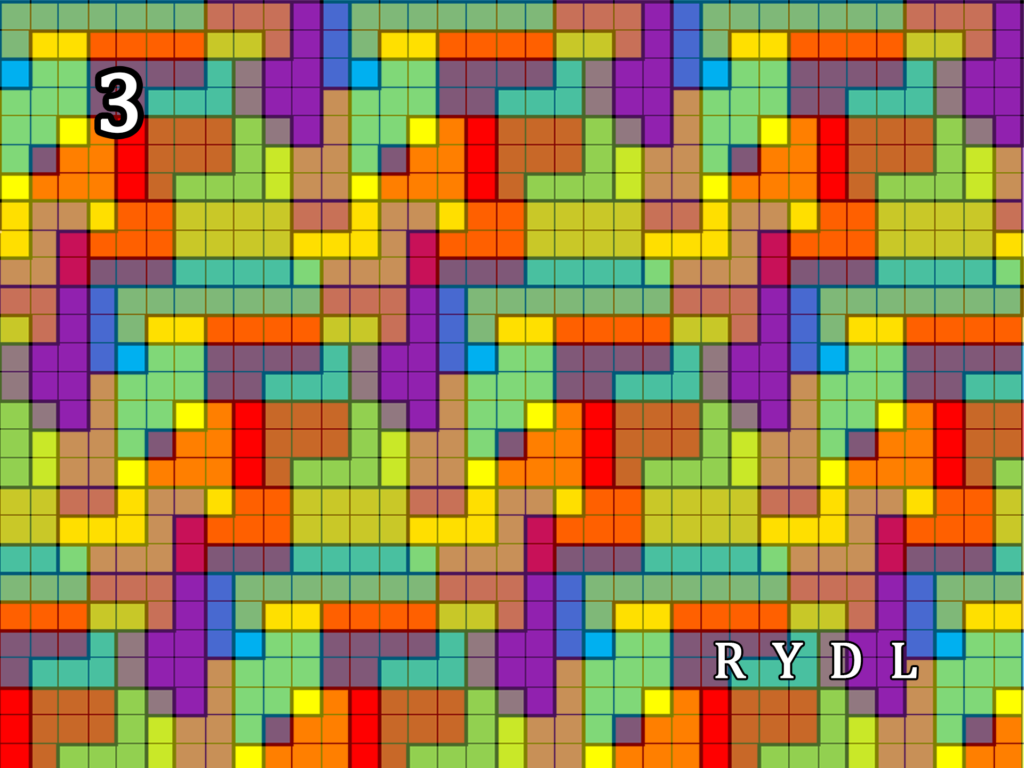
This puzzle consists of a wall of blocks in 27 different colors, looping in a 12w×10h group, with an offset of 4 to the right in each row. Looking at the wall of squares, there are a few features you can find:
- Some colors look like a mix of multiple other colors;
- Some grid lines are thicker than the others;
- Some grid lines are in a different colors from the others.
Taking a closer look, you can find some grid lines sharing the same tint can build a larger square of 2×2 in size, with 3 of the 4 sides are bold. Tracing down the grids, the entire wall can be split into multiple blocks of 5 large squares each.
It’s easy to see that the same pattern repeats itself with a (1, 3) offset. Dropping the repeating part, we can get the following cleaner wall of pieces.
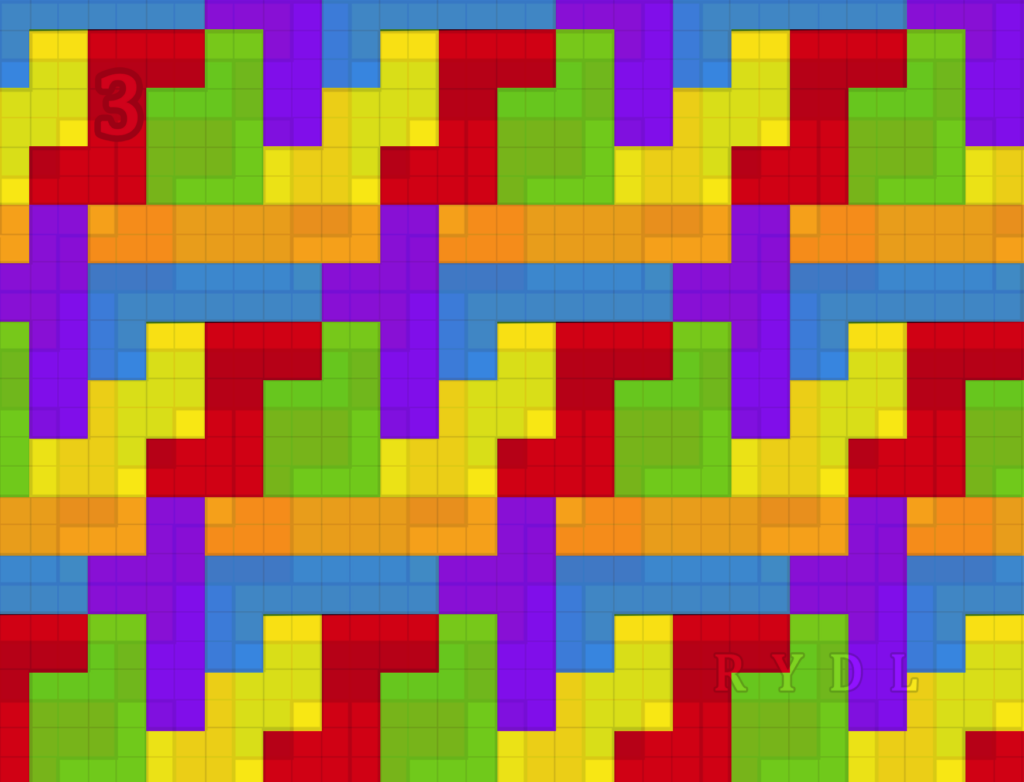
It’s easy to see that each piece consist of 5 large squares, making them Pentominoes. Matching the 6 pieces we found against their names, we can get:

| □■■ □■□ ■■□ | ■■■■■ | □□■ □■■ ■■□ | □■ ■■ ■■ | ■■■■ ■□□□ | □■ ■■ □■ □■ |
| Z → S | I | W → M | P | L | Y |
simply adv. /ˈsimplē/
in a straightforward or plain manner.
Puzzle #4
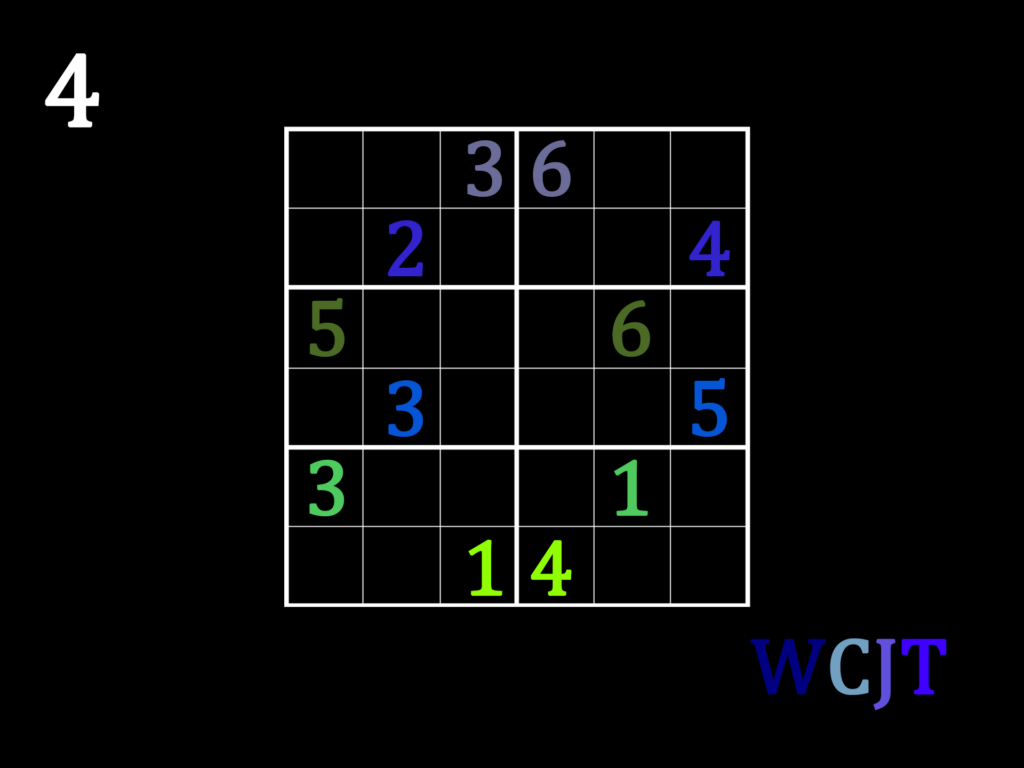
Solution to this puzzle courtesy of Ben Pig Chu.
The main puzzle consists of a 6×6 Sudoku, whose solution is as follows.
| 4 | 5 | 3 | 6 | 2 | 1 |
| 1 | 2 | 6 | 5 | 3 | 4 |
| 5 | 1 | 4 | 3 | 6 | 2 |
| 6 | 3 | 2 | 1 | 4 | 5 |
| 3 | 4 | 5 | 2 | 1 | 6 |
| 2 | 6 | 1 | 4 | 5 | 3 |
The letters at the corner shows WCJT instead of RYDL. By using Vigenère Cipher, using RYDL as plaintext and WCJT as key, the cypher text shows NAME.
Each row of numbers and each letter at the corner are in different colors. (Sequel from the author) Looking up the colors’ name on search engines (most of which came from a Wikipedia Article year ago, scraped here)
| Text | Color (Hex) | Name found |
|---|---|---|
| W | #000080 | Navy blue |
| C | #72ADC1 | Air Superiority Blue |
| J | #6050DC | Majority Blue |
| T | #3F00FF | Electric Ultramarine |
Initials of names to the 4 colors again suggest NAME.
By doing a transposition of colors found in each row of the Sudoku with the numbers in each row, we can get another set of colors, whose names are also available on the list.
| Sudoku Row | Color (Hex) | Transposed Color (Hex) | Name |
|---|---|---|---|
| 453621 | #64C563C69291 | #91926364C596 | Amethyst |
| 126534 | #31222635C3D4 | #3122C3D43526 | Lime Green |
| 514362 | #45B164A32652 | #B152A3644526 | Brass |
| 632145 | #06535251D455 | #515253D45506 | Ebony |
| 345216 | #43F4A2C551F6 | #51A243F4C5F6 | Iris |
| 261453 | #9206F1D40543 | #F19243D40506 | Tanglo |
Joining the initials of the 6 colors, we can get ALBEIT.
albeit conj. /ˌɔːlˈbiːɪt/
although
Puzzle #5
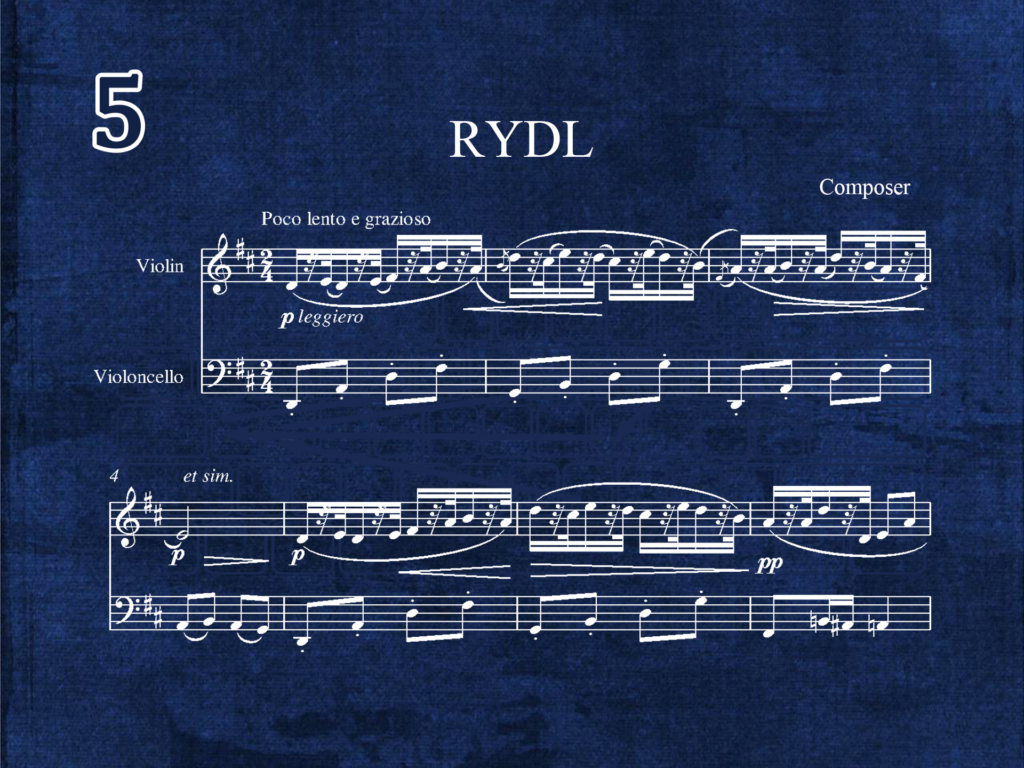
Hint from the author:
[P]lease take notice that some of the puzzles can only be solved with the original image, and that any form of compression (say, re-sending as a jpeg) will render it unsolvable.
— COL
So, steganography that is. And, indeed it is.
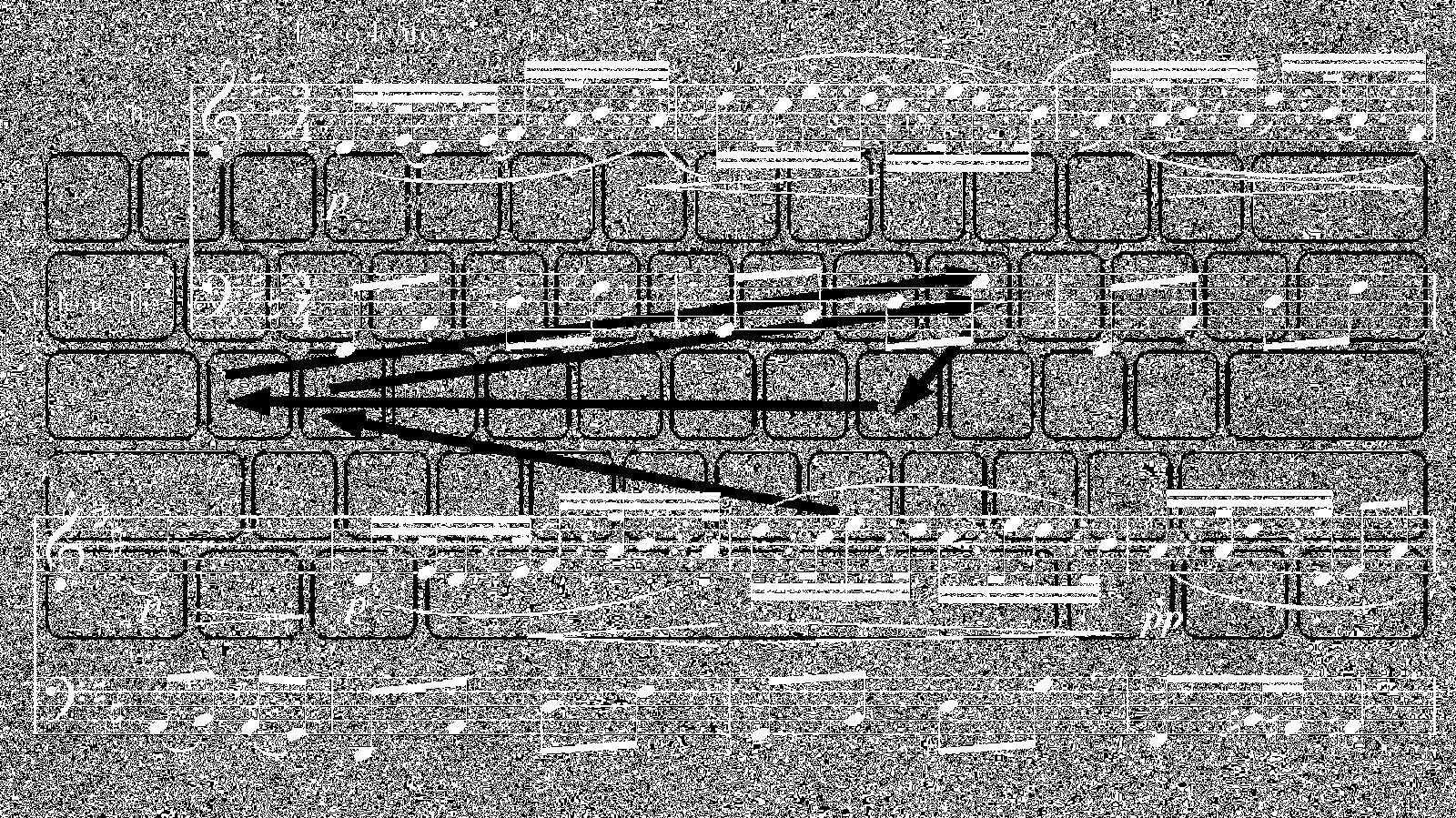
As a Colemak user, and someone who did some researches on keyboards layout, my first intuition is to map it to the 4 most popular English keyboard layouts:
- Qwerty:
MSOKAO - Dvorak:
MORTAR - Colemak:
MRYEAY - Workman:
LSPEAP
Only MORTAR is a word, so it must be Dvorak. Working from there, it happened that there is a composer from the Dvorak family. Tracking down the path, I managed to find the music score the puzzle is derived from.
mortar n. /ˈmôrdər/
a mixture of lime with cement, sand, and water, used in building to bond bricks or stones.
Puzzle #6
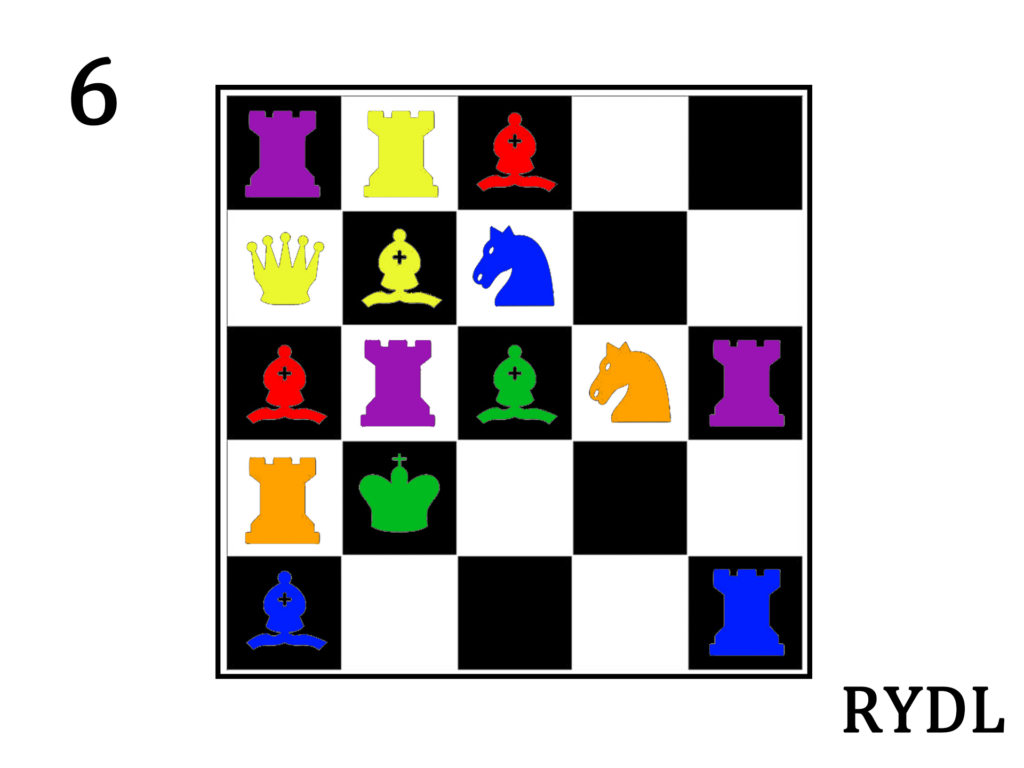
Solution to this puzzle courtesy of Ben Pig Chu.
There are 15 chess pieces in 6 different colors on a 5×5 chess board. Splitting them up by colors, we can get:
| ♜ | 2 | 1 | 1 | 2 |
| 1 | 1 | 1 | ||
| ③ | ♜ | 2 | 2 | ♜ |
| 1 | 1 | 1 | ||
| 1 | 1 | 1 |
| 1 | ③ | |||
| ♞ | 1 | 2 | ||
| 1 | 1 | 2 | ||
| 2 | 1 | 1 | ||
| ♝ | 1 | 1 | 1 | ♜ |
| ③ | ♜ | 2 | 1 | 1 |
| ♛ | ♝ | 1 | 1 | 1 |
| 2 | 2 | 1 | ||
| 1 | 1 | 1 | 1 | |
| 1 | 1 | 1 | 1 |
| 1 | 1 | |||
| 1 | 1 | |||
| 1 | 1 | ♝ | ||
| 1 | ♚ | 1 | 1 | |
| ② | 1 | 1 | 1 |
| ♝ | ||||
| ② | 1 | |||
| ♝ | 1 | |||
| 1 | ||||
| 1 |
| 1 | 1 | 1 | ||
| 1 | 1 | |||
| 1 | ♞ | |||
| ♜ | ② | 1 | 1 | 1 |
| 1 | 1 | 1 |
All chess pieces of each color can be moved to the same square, highlighting each of these, we can get:
| Yellow | Blue | |||
| Red | ||||
| Purple | ||||
| Orange | ||||
| Green |
Matching the highlighted squares against the Tap Code or Polybius square, we can then get:
| Ⓐ | B | ◆ | D | Ⓔ |
| F | Ⓖ | H | ◆ | ◆ |
| Ⓛ | M | N | O | P |
| Q | Ⓡ | S | T | U |
| Ⓥ | W | X | Y | Z |
Rearrange the letters in the order of rainbow colors, we can then get GRAVEL.
gravel n. /ˈgravəl/
a loose aggregation of small water-worn or pounded stones.
Metapuzzle
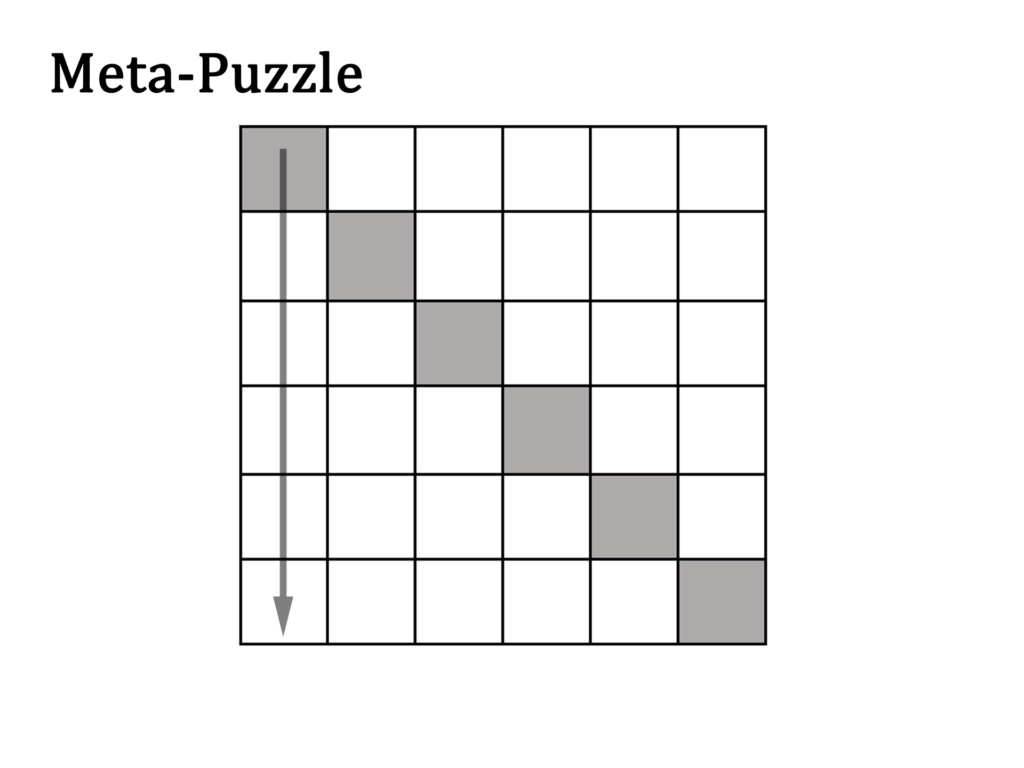
Metapuzzle was rather simple once you have all the answers from the previous stage. Arranging the answers from previous stages in alphabetical order (suggested by the arrow), and fill in the blanks.
| A | L | B | E | I | T |
| E | P | O | N | Y | M |
| G | R | A | V | E | L |
| M | O | R | T | A | R |
| P | L | I | G | H | T |
| S | I | M | P | L | Y |
Reading along the shaded diagonal, we can get APATHY as the final answer.
apathy n. /ˈæp ə θi/
lack of interest, enthusiasm, or concern
An archive of the OneNote Notebook used when solving the puzzles are left as an archive. The original puzzle files are also available for download below. Great thanks to COL for composing this wonderful puzzle and for their permission sharing it. COL has later shared their solution to this puzzle in the author’s perspective (in Chinese).
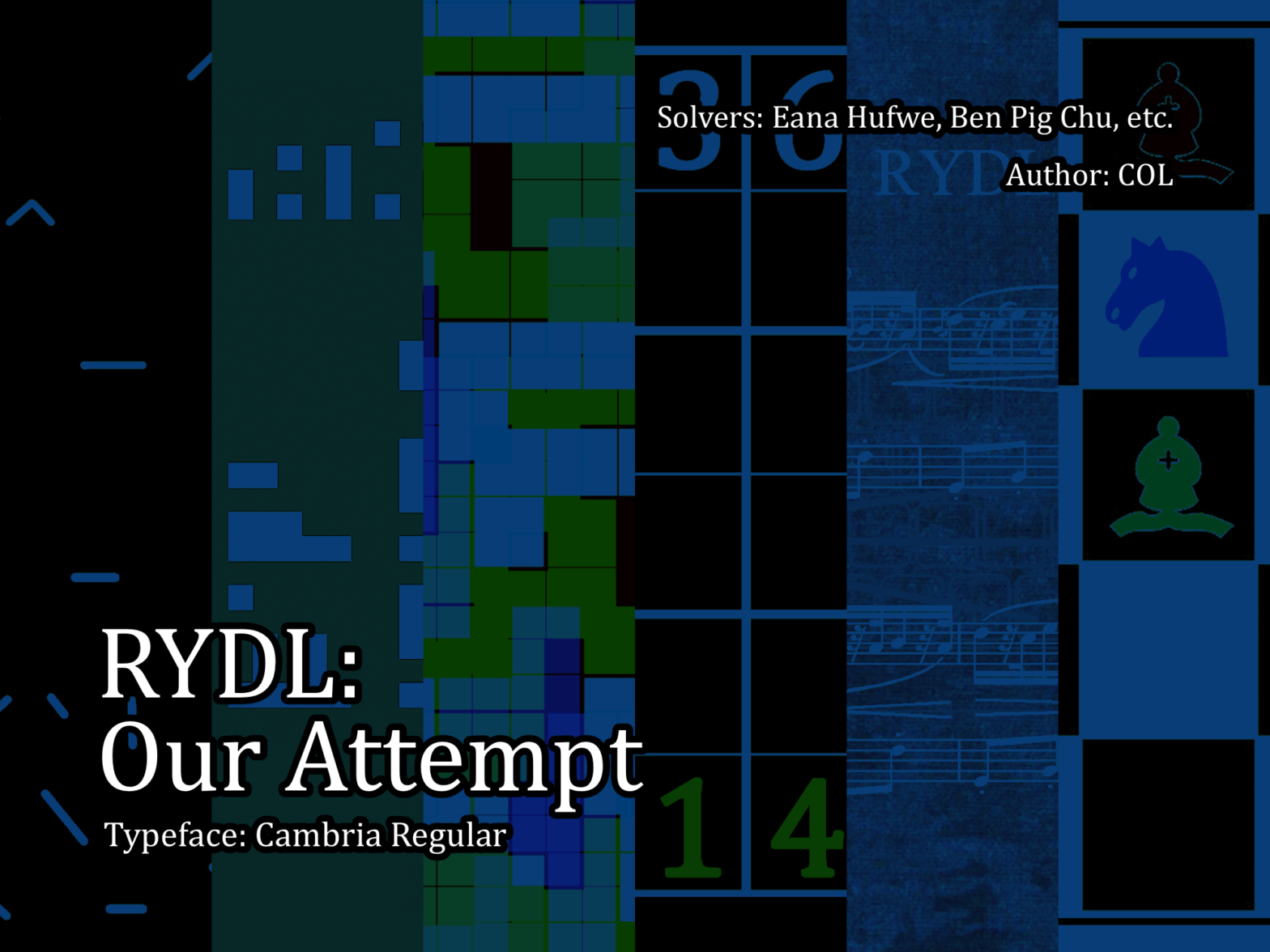
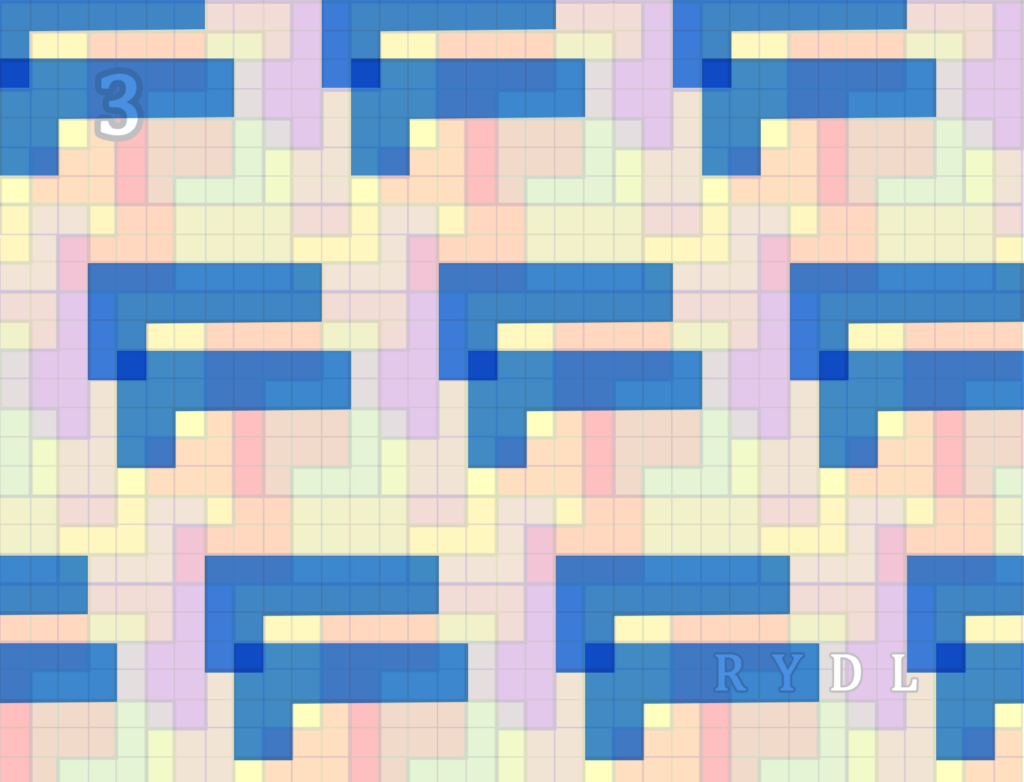
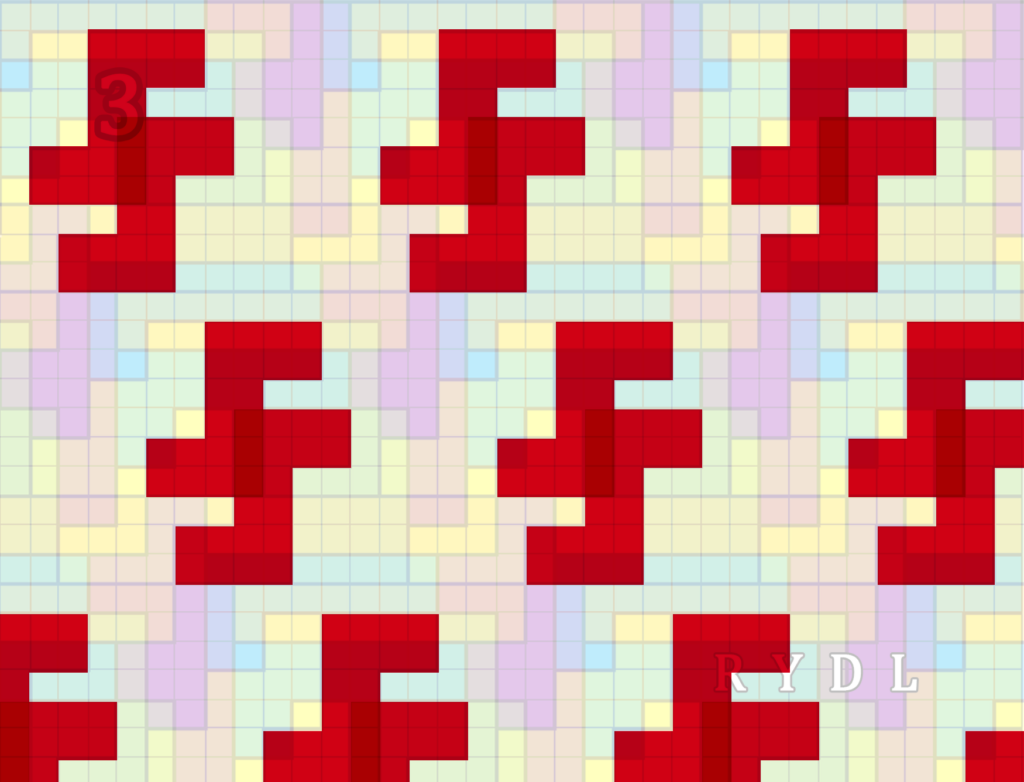
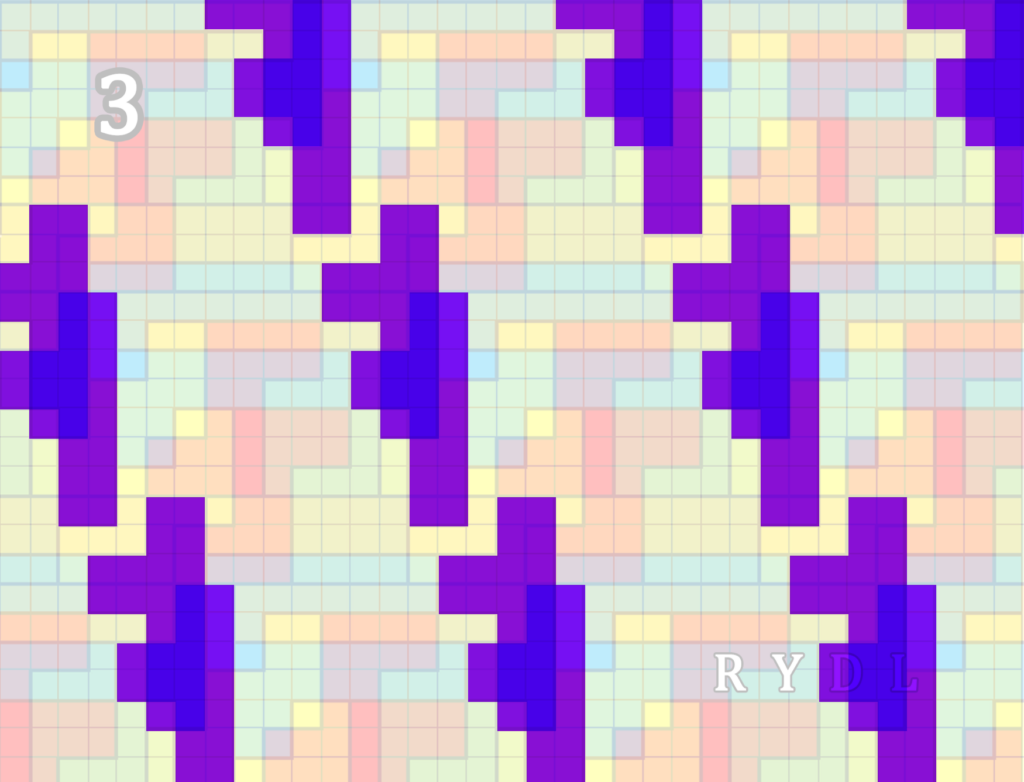
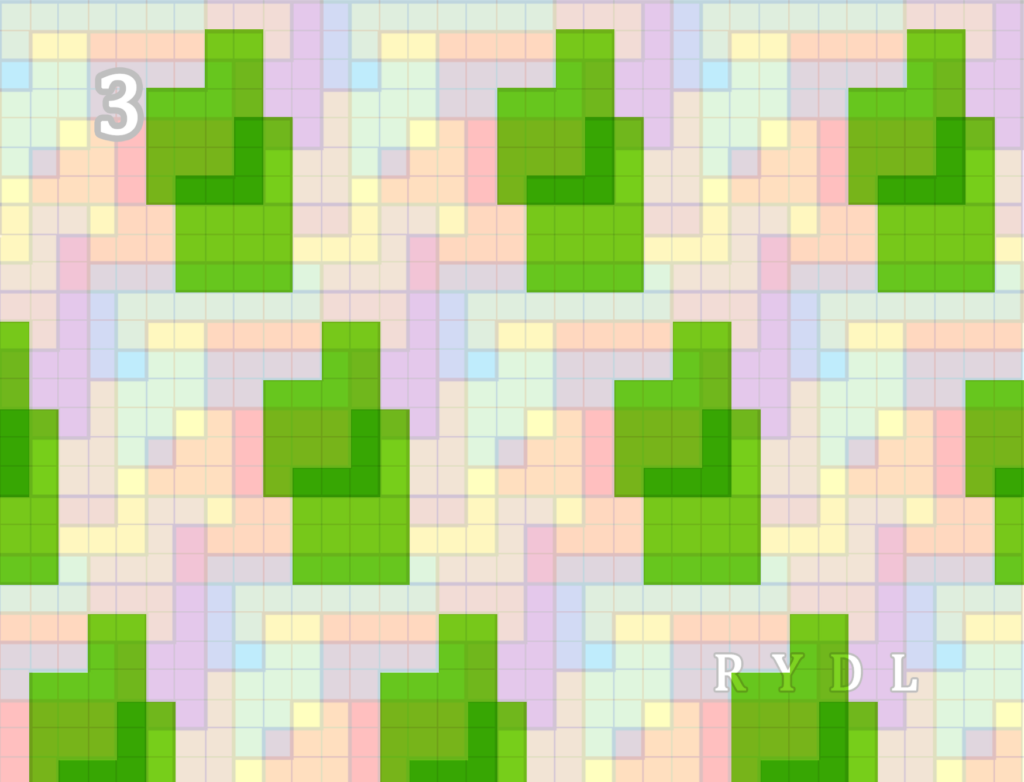
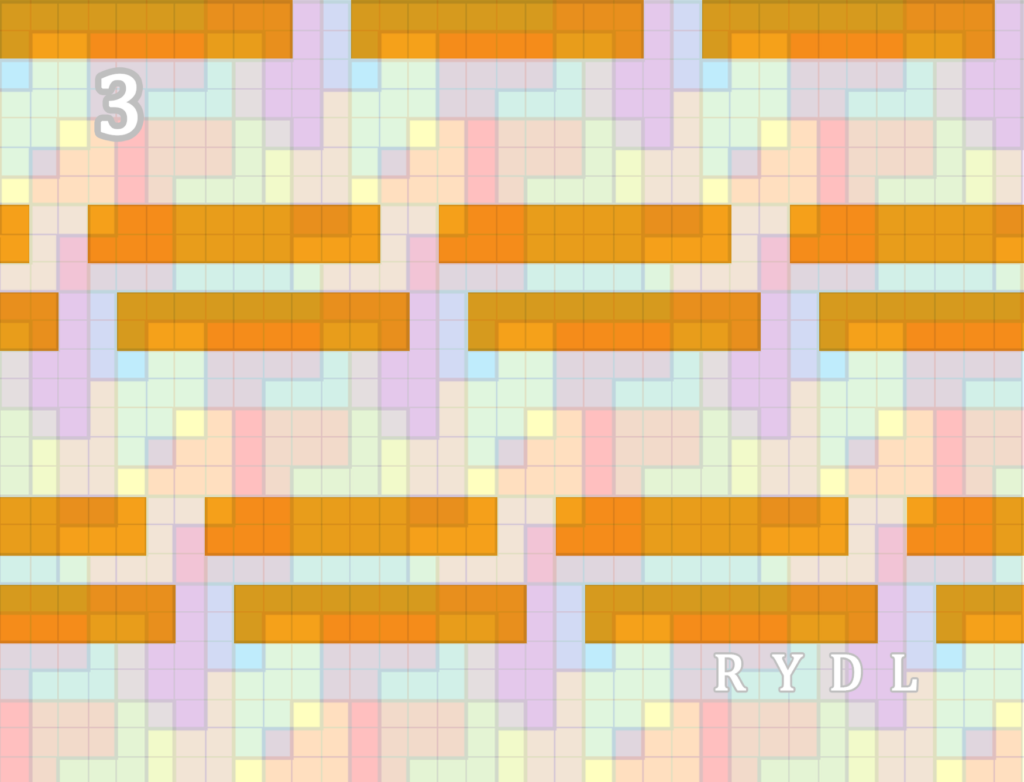
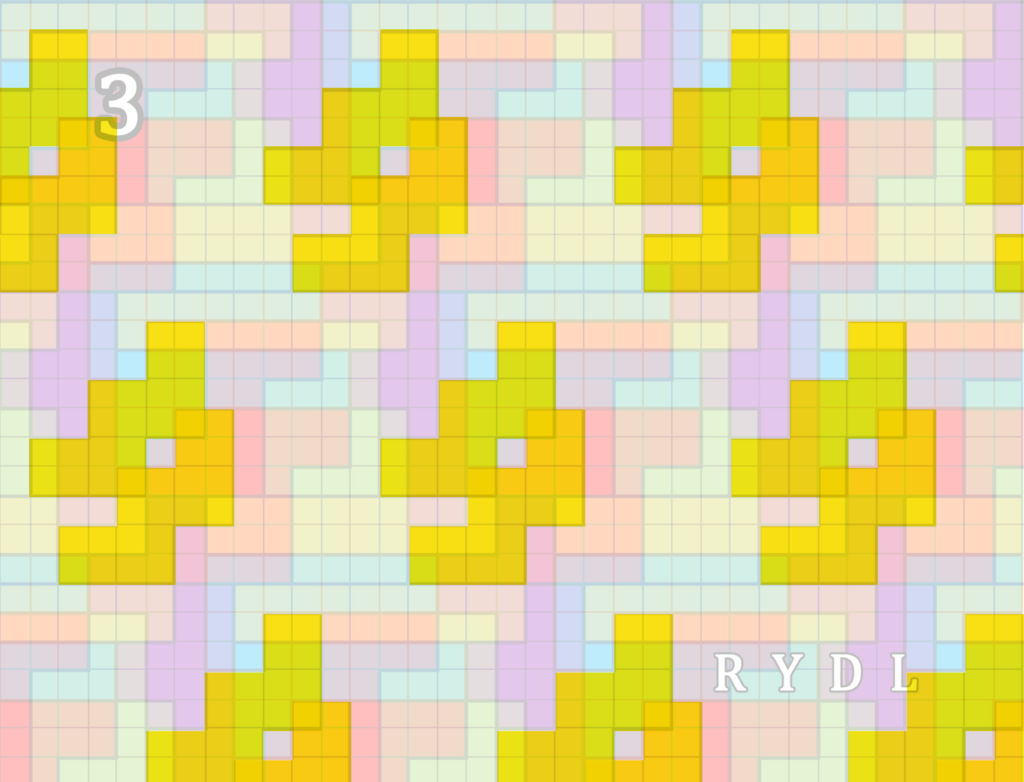
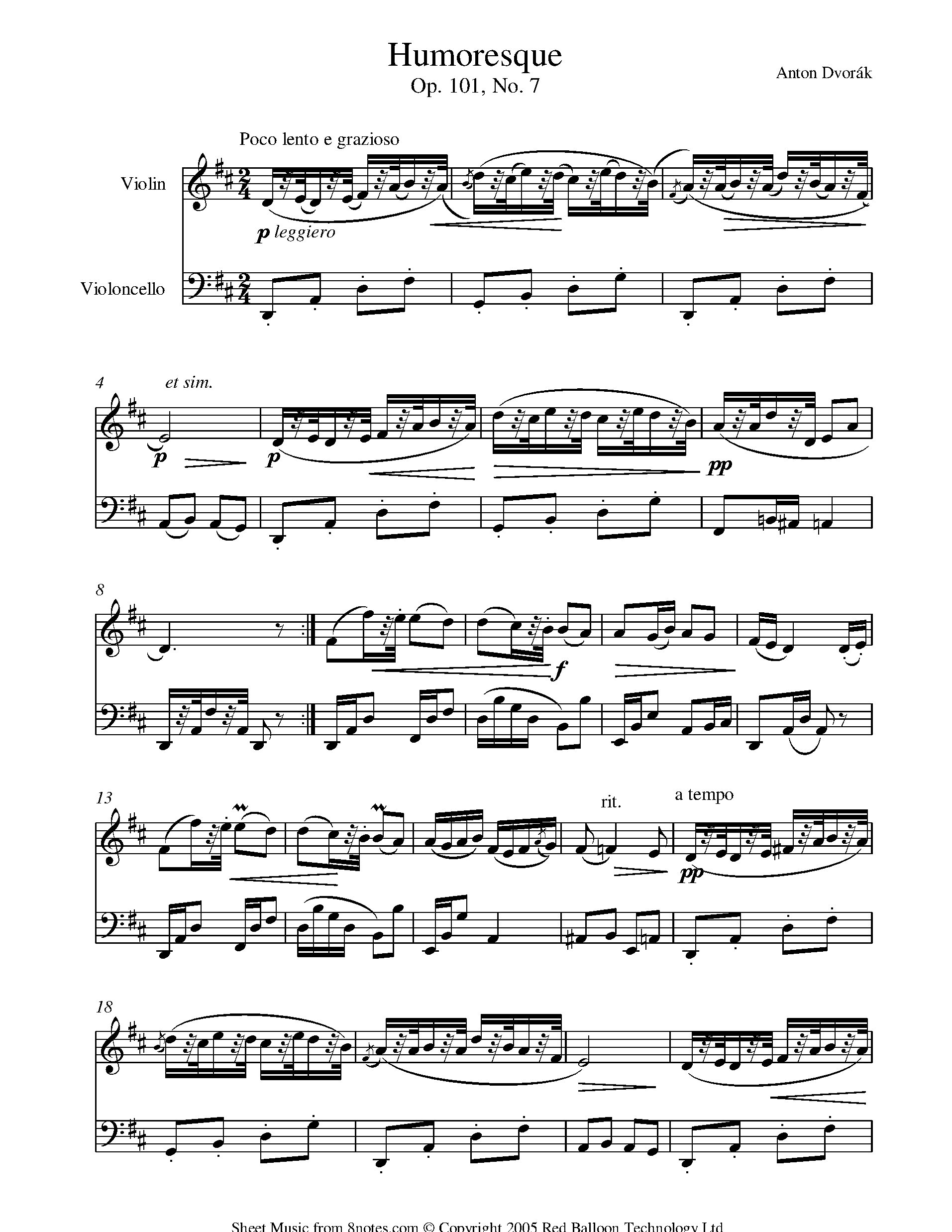
Leave a Reply